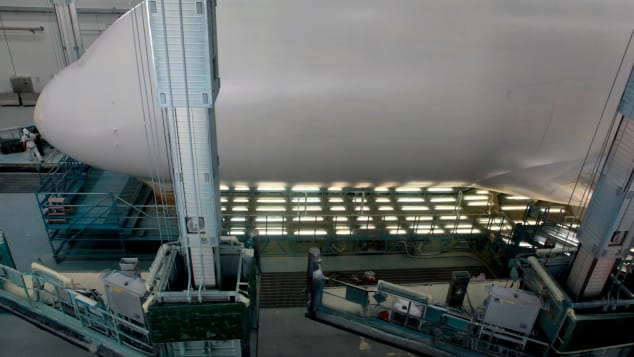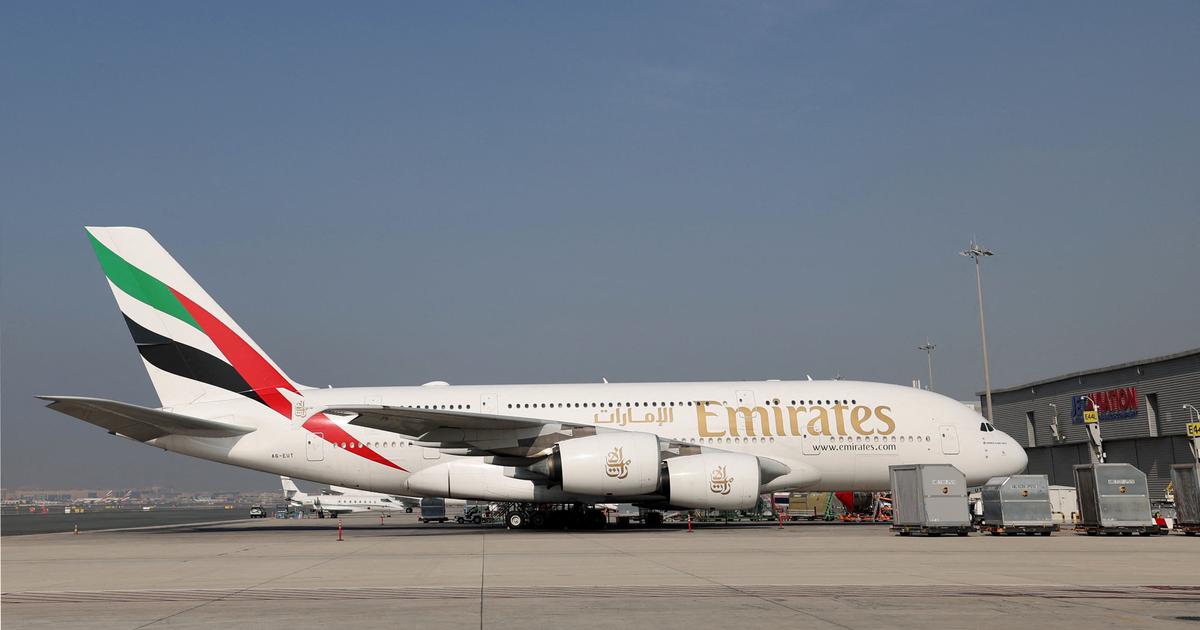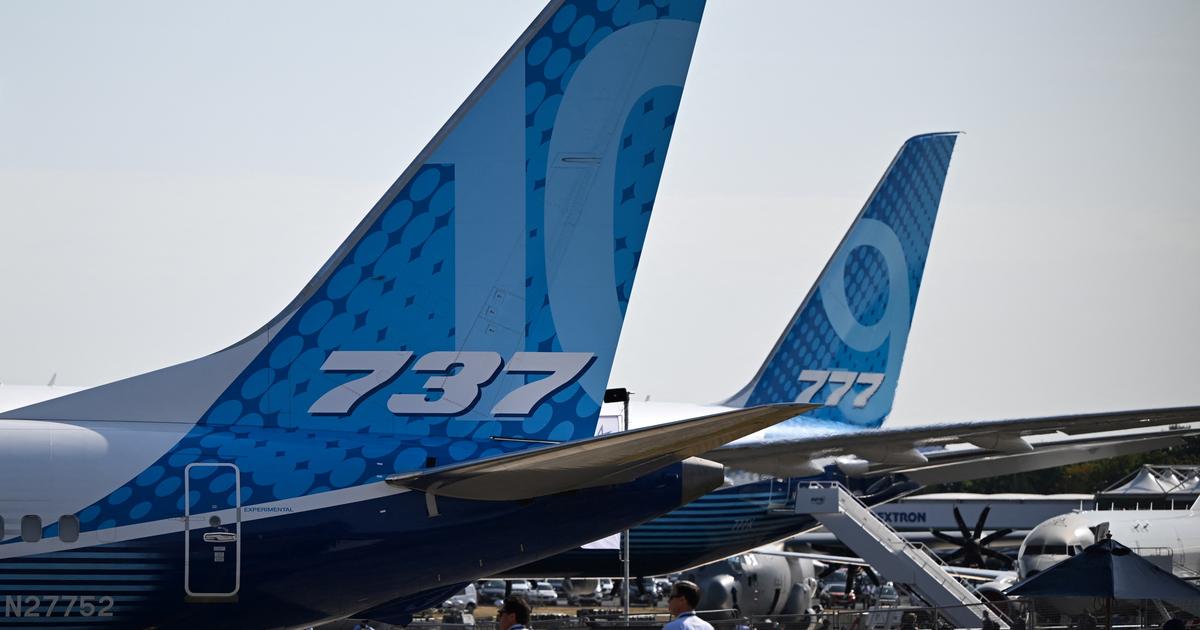This will be the business class of aircraft in four years 0:53
(CNN) -
Loved by passengers for its spaciousness and comfort, but not liked by airlines due to its running costs, the Airbus A380 has already entered its downturn years, even though it made its commercial debut just 14 years ago. years.
Its final chapter came into sharper focus this week, when Airbus delivered the last A380 ever made to its new owners, Emirates, ending 18 years of production of the aircraft.
The superjumbo was conceived at a time when larger jets carrying hundreds of passengers between hubs were an attractive proposition, but when it started flying, a different business model - smaller jets connecting smaller airports - had taken hold. of the aviation industry.
However, the largest airliner ever produced built up a following, and while a significant portion of the fleet will not survive the pandemic, the news that the plane will return to the air electrified those specifically looking for it when making flight reservations.
Now several airlines, including Emirates, British Airways and Singapore, are offering long-haul flights on the superjumbo again.
Whether you plan to take a flight on an A380 while you still have the chance or not, here is our pick of the 20 most interesting facts about this unique aircraft.
advertising
1. Bigger than ever
As the only full-length double-decker airliner ever built, the A380 is so large that it could theoretically carry a maximum of 853 passengers if all seats were economy class.
However, no airline has equipped an A380 like that: the highest capacity on record is 615 people in a two-class configuration (economy + business).
2. Cables per kilometers
Each A380 contains more than 482 kilometers of electrical cables and wiring, and its installation proved so challenging that some of the initial delays in the aircraft's production were specifically attributed to the wiring.
In 2009, Airbus streamlined operations by speeding up the installation of the brackets that hold the cabling - there are as many as 80,000 on each aircraft.
3. Turbulent air
The size and weight of the superjumbo can cause problems for smaller aircraft that follow closely behind it, a phenomenon known as "wake turbulence."
In 2017, a small private jet flew into the air when it passed an A380.
Recent guidelines suggest that light aircraft should wait four minutes before taking off or landing on the same runway that just used an A380.
4. A serious paint job
It takes 950 gallons of paint to cover the entire 3,530 square meter area of an A380.
A regular coat of paint adds 635 kilograms of weight to the aircraft.
The process usually takes about two weeks.
5. It is not necessary to carry light luggage
The cargo hold of an A380 can carry up to 3,000 suitcases, and two cargo belts, one at the front and one at the rear, can be used simultaneously to speed up the process.
6. A true globalist
Each A380 is made up of 4 million individual components, produced by 1,500 companies from 30 different countries.
All used to converge by road, air and sea to Toulouse, in the south of France, where the last plane was assembled.
7. Possibility of showering
A fully equipped bar with onyx countertops on the upper deck is relatively common on the A380.
Less so are the fully functional showers installed in the first class suites on the Emirates and Ethiad A380s, or the full-size double bed that Singapore introduced in its double suites.
8. More space than a basketball court
With its full-length double-deck, the A380 offers almost 557 square meters of usable space, roughly 40% more than the second-largest airliner, the Boeing 747-8.
9. Loved by Emirates
By far the largest operator of the A380 is Dubai-based Emirates, with 123 orders, followed by Singapore Airlines with 24. In total, 14 airlines have ordered and flown the A380.
When Emirates canceled an order for 39 A380s in early 2019, Airbus decided to cease production of the aircraft entirely by the end of 2021.
10. You can have a piece of one
While it has just received the last A380 manufactured, Emirates has already recalled the first one it acquired 14 years ago and handed it over to be recycled and turned into furniture.
Among the items listed for pre-order at the Dubai Airshow in November were coffee tables made with wheels, clocks made with fuel panels on the wings and the entire 24-meter-high tail of the plane.
Also in play was the elegant bar on the plane's upper deck.
11. The secret compartment
With a cabin crew of three and up to 21 flight attendants, the A380 has the largest crew of any passenger aircraft.
The galley area has enough space for five people to work simultaneously, and crew members can rest in a "secret" area found on the third deck (the cargo deck at the bottom), complete with bunks and a private bathroom.
12. Not for everyone
The A380, due to its size, cannot be operated at all airports and many had to make modifications to be able to handle the superjumbo.
In Munich, it was necessary to build special hangar doors to accommodate the tail of the plane.
Airbus says 140 airports around the world are compatible with the plane and more than 400 can accept it in the event of an emergency landing.
13. The longest flight
Emirates operates the longest scheduled passenger flight of the A380: Dubai to Auckland, 12,874 km and more than 17 hours in the air.
In 2019, Qantas flew one of its A380s back to base in Sydney from Dresden, Germany, after the refit.
The plane was empty and flew for more than 18 hours and approximately 16,093 km.
14. The shortest flight
Singapore Airlines announced that it will offer the world's shortest new A380 flight - a fast hop of just 289 km s between Changi Airport in Singapore and Kuala Lumpur in Malaysia.
Emirates previously held this record with a flight from Dubai to Muscat, Oman, which logged around 337 km.
15. The cargo version that never was
When Airbus launched the A380 in December 2000, it offered a cargo version called the A380F, designed to compete with the equivalent exclusive cargo models of the Boeing 747. UPS and FedEx initially placed orders for the aircraft, but after its launch was delayed. , canceled them, resulting in the cancellation of the A380F program itself.
16. Flappy wings
During takeoff, the A380's wings flap so much that they flex up to 3 meters.
That's a lot, but not as much as airplanes with a higher amount of composites, like the Boeing 787, whose wings can flap up to 7 meters.
17. Huge depreciation
The list price for an Airbus A380 was about $ 450 million, excluding discounts, which are common.
However, the current value of the fleet has plummeted: One estimate says a 2005 model is now worth just $ 77 million, and a like-new A380 built in 2019 just $ 276 million.
18. Two per wing
The aircraft's four engines are one of its most distinctive factors and a downside, as they require more fuel than twin-engine aircraft.
They are made by Rolls-Royce in the UK or the Engine Alliance in the US, and can raise the plane's maximum takeoff weight from 650 tonnes to cruising altitude in 15 minutes.
19. No US buyers
One of the main reasons the A380 was never a commercial success is the fact that not a single American airline bought the plane.
Major European airlines such as Air France, British Airways and Lufthansa did, but in small numbers.
By the time the A380 became available, American carriers had already turned away from jumbo jets and opted for more fuel-efficient twin-engine jets, such as the Boeing 787 and Airbus A350.
20. A partial return
The pandemic hit the aviation industry and the A380 hardest.
Lufthansa and Air France never put their A380s back into service after they were grounded, instead deciding to retire all of their fleets, while Qatar sent half of its fleet to permanent storage.
On the other hand, Qantas, British Airways, Emirates, Qatar, Singapore, All Nippon and Korean Air announced that they are restarting the A380 service.













/cloudfront-eu-central-1.images.arcpublishing.com/prisa/KMEYMJKESBAZBE4MRBAM4TGHIQ.jpg)

